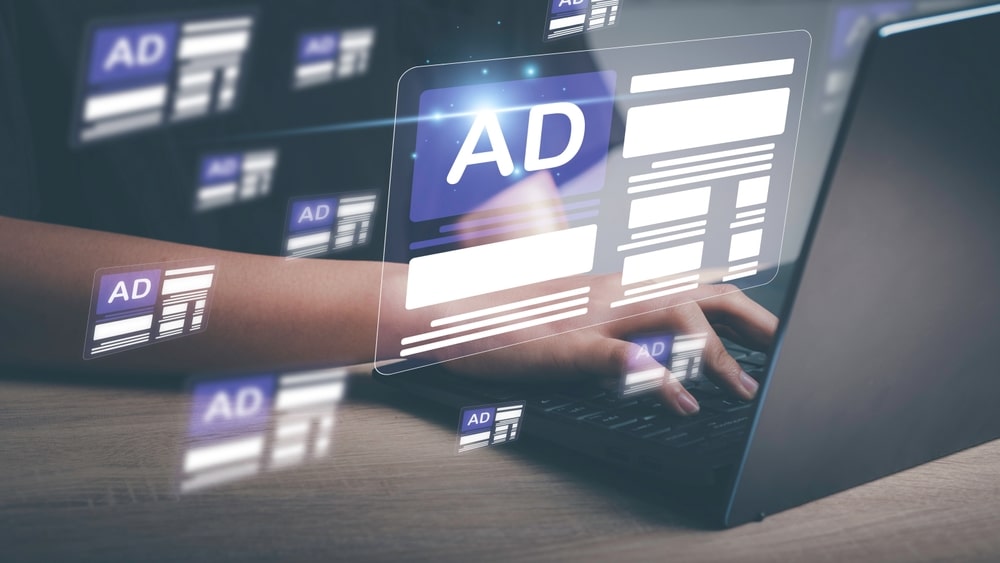Have you ever wondered how those online ads seem to know exactly what you’ve been thinking about buying? Welcome to the world of programmatic advertising, a digital marvel that’s reshaping how ads reach us.
At its core, programmatic advertising is the automated buying and selling of online ad space, using sophisticated algorithms and data analytics to target specific audiences with incredible precision.
The birth and rise of programmatic advertising
It all started in the early 2000s, a time when the internet was just stretching its wings. Advertisers were looking for a smarter, more efficient way to utilise the burgeoning digital space.
Key components of programmatic advertising
Programmatic advertising is built on several foundational elements that work in tandem to optimise the advertising process. These include:
- Automated Bidding: The use of algorithms to automate the buying of ad space, ensuring efficiency and speed.
- Real-Time Data: Leveraging up-to-the-minute data for making informed decisions about ad placements.
- Audience Targeting: Utilising data analytics to identify and target specific audience segments with tailored ads.
The early days of programmatic advertising
The initial concept and implementation
In the early days, programmatic advertising was a rough diamond. The idea was there, but the technology needed to catch up. Advertisers and tech companies alike were on a learning curve, experimenting and innovating to see what worked.
Challenges and limitations in the early stages
Like any new technology, programmatic advertising had its teething problems. Issues with transparency, ad fraud, and limited targeting capabilities were just some of the hurdles that needed to be overcome.
Key players and pioneering technologies
Despite these challenges, pioneers in the field pushed forward. Companies like Google and Facebook began to develop platforms that would set the standard for programmatic advertising.
The technological revolution and its impact
The role of big data and AI
The evolution of technology has been a catalyst for transformation in programmatic advertising, particularly with the advent of big data and artificial intelligence (AI). This integration marked a significant shift in how advertising operates.
Big data allows for the aggregation and analysis of vast datasets, enabling advertisers to understand consumer behaviour patterns at an unprecedented scale. AI, on the other hand, leverages this data to make intelligent decisions about which ads to show to which users. According to a report by McKinsey & Company, companies that utilise AI in advertising can see up to a 15% increase in revenue.
Predictive analytics and targeting
Predictive analytics in programmatic advertising harnesses the power of AI to forecast consumer behaviour based on historical data. This approach enables advertisers to anticipate needs and preferences, often before consumers themselves are aware of them.
For instance, a study published in the Journal of Marketing Research demonstrated how predictive analytics could increase click-through rates by analysing past consumer behaviour to anticipate future interests.
- Real-Time Bidding (RTB) and Automation
Real-Time Bidding (RTB) revolutionised by introducing a system where ad inventory is bought and sold on a per-impression basis, using automated auctions. This process, often completed within milliseconds, allows for dynamic pricing and more efficient ad placement. A report by eMarketer highlighted that RTB accounts for a significant portion of digital ad spending, indicating its critical role in the advertising ecosystem.
- Mobile Advertising and Social Media Integration
The proliferation of smartphones and the ubiquity of social media have opened new avenues for programmatic advertising. Mobile advertising, in particular, has seen exponential growth. According to Statista, global mobile ad spending is projected to surpass $240 billion by 2022. This growth is fuelled by the ability to leverage location data for more contextually relevant advertising, as well as the integration of social media platforms which offer a wealth of user data for targeted advertising.
Privacy concerns and data protection regulations
The advancements in programmatic advertising also brought to the forefront the issue of user privacy and data protection. The implementation of the General Data Protection Regulation (GDPR) in the EU is a prime example of a regulatory response to these concerns. GDPR imposes strict guidelines on how personal data is collected, stored, and used, ensuring user privacy is respected.
Compliance with such regulations is not just a legal obligation but also a trust-building measure with consumers, as noted in a report by the International Association of Privacy Professionals.
Current trends and innovations in programmatic advertising
Multi-channel strategies
Programmatic advertising is evolving beyond the digital space, embracing a multi-channel approach. This strategy integrates online and offline advertising, ensuring a consistent brand experience across various platforms. It reflects the diverse media consumption habits of today’s consumers and allows for more comprehensive data analysis and targeted messaging.
Voice and visual search advertising
Voice and visual search technologies are revolutionising advertising. Voice search, through smart speakers and assistants, offers personalised ad experiences based on verbal queries. Visual search allows consumers to find products and receive ads using images, making the shopping experience more intuitive and visually driven.
Augmented reality (AR) and virtual reality (VR) in advertising
AR and VR are transcending their gaming roots to become vital tools in advertising. AR enhances the shopping experience by letting consumers visualise products in their own space, while VR creates immersive brand experiences. Both technologies are effective in creating engaging, memorable interactions that strengthen the consumer-brand connection
The future of programmatic advertising
Predictions and emerging technologies
So, what’s next for programmatic advertising? We’re looking at even more personalized, immersive experiences, perhaps even ads that can adapt in real time to our reactions.
The role of 5G and the internet of things (IoT)
With the advent of 5G and the expansion of IoT, the possibilities for programmatic advertising are boundless. Faster internet speeds and interconnected devices could take targeting and personalization to levels we’ve never seen before.
Ethical considerations and consumer expectations
As we move forward, the balance between effective advertising and ethical considerations will be crucial. Advertisers will need to navigate consumer expectations around privacy and personalisation with care.
Conclusion
Programmatic advertising has undergone significant evolution and continues to do so. This dynamic field is consistently adapting to emerging technologies and shifts in consumer behaviour.
For professionals in this arena, being well-informed and flexible is crucial. The digital advertising landscape is evolving at a rapid pace, making it essential to stay ahead of current trends to remain relevant.
Looking ahead, it’s evident that this form of advertising will maintain its prominence in the digital realm. Its capacity for innovation and adaptation positions it as a fascinating area for growth and development. Stay alert – the next major breakthrough in this sector could be just around the bend!



